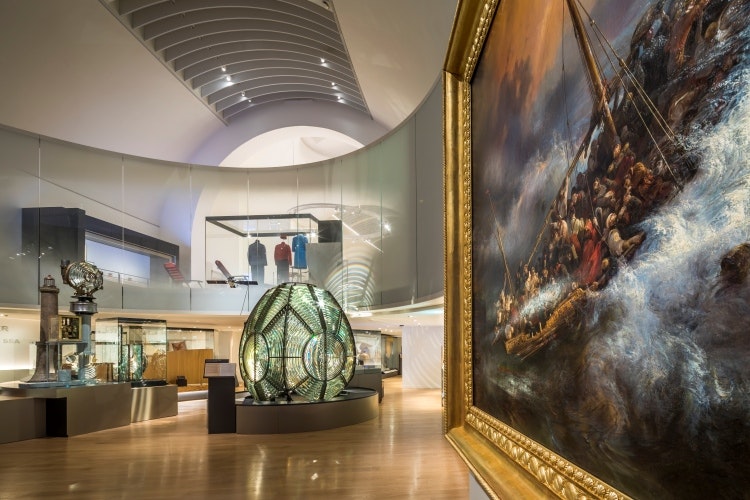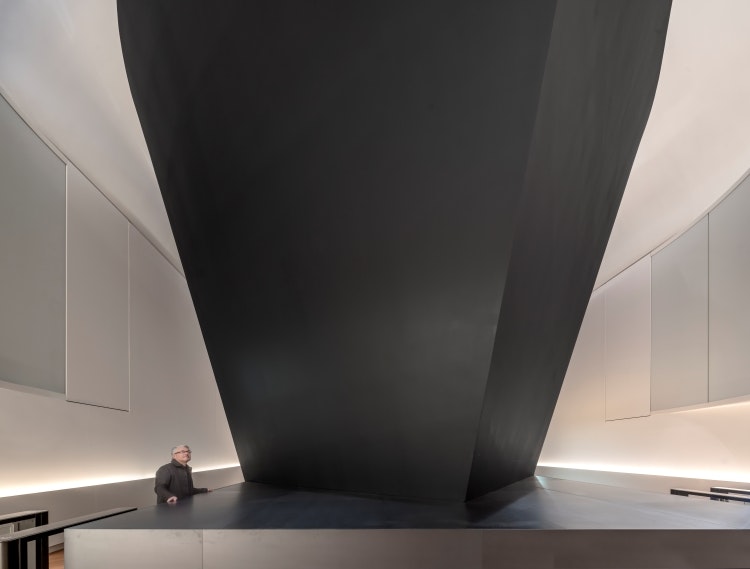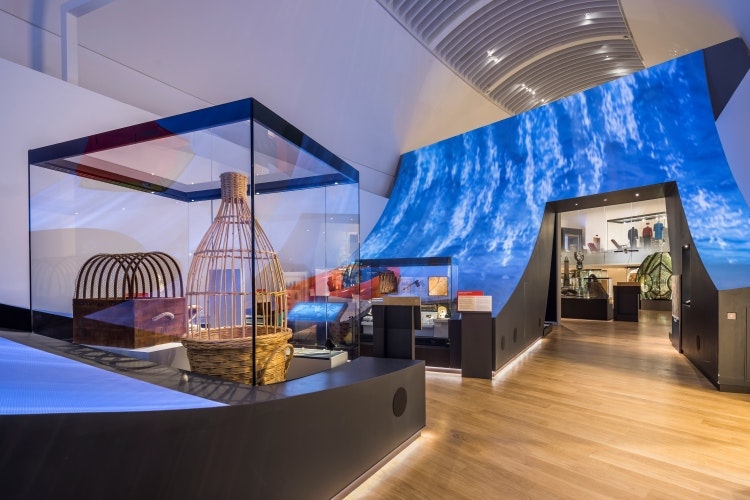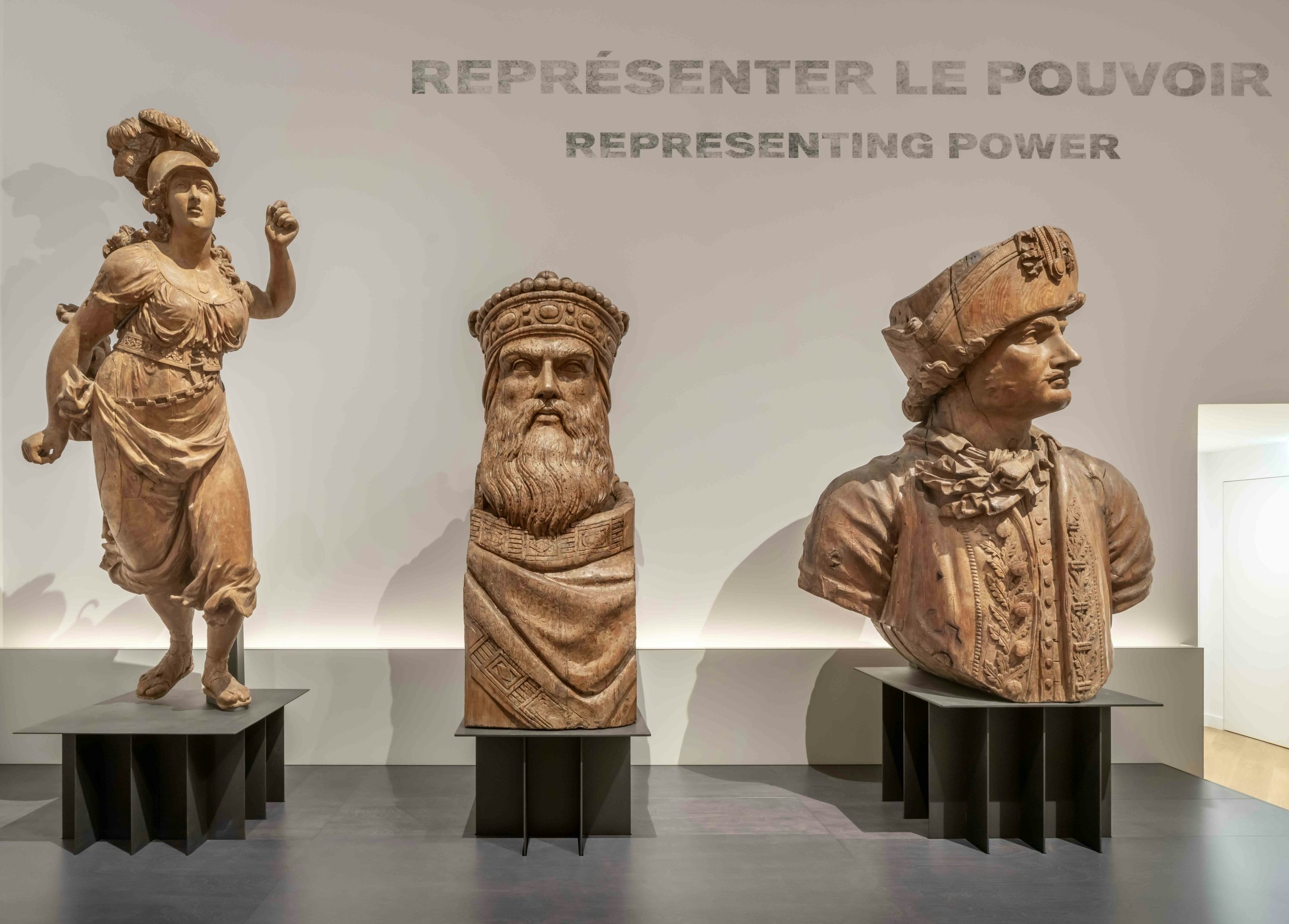Casson Mann has transformed the historic Musée national de la Marine in the Palais de Chaillot in Paris (MnM) as part of a six-year-long renovation project by architects H2O and Snøhetta.
The London-based consultancy was brought into the project around four and a half years ago having won a competitive pitch against around five French practices, and was briefed to “bring the sea to Paris and revitalise the story of France’s maritime heritage, past and present,” says Casson Mann.
The MnM collection began in 1748, and the site now spans 2,500 square metres and occupies three levels, with some ceilings reaching heights of 12 metres. As such, Casson Mann took an innovative approach that deviates from traditional museum wall hangs and display cases in discrete rooms. Instead, the scenography makes use of open space to create drama and a sense of rhythm utilising different heights and scales. It mixes large sculptural interventions including shipping containers, immersive audiovisual installations, interactive media and more traditional “national treasures” such as busts, paintings and ship models.

An integral part of the project was to open up the museum to new audiences. To do that, Casson Mann’s approach was to reframe maritime heritage in view of the profound power of the sea itself, taking in themes around climate crisis and emotion-led stories of human endeavour, through displays covering everything from commerce, sport, leisure and travel to war, peace, fear, loss and survival – “subjects intensified by life at sea,” Casson Mann points out.
“They wanted to update the story and talk about the sea through the lens of a more human relationship with it, touching on ecological and sustainability issues,” says Roger Mann, Casson Mann founder and creative director.
“There’s still that appeal for ship fanatics but now there’s a much broader story threaded through everything that they weren’t telling before, making it more relevant to new audiences. These days we almost forget how important the sea has been for everything throughout history and still today, so we wanted to open people’s eyes to that and also show how fragile it is, and underscore that we need to protect it.”

There’s a section, for instance, that shows birds affected by the devastation of oil spills and discusses pollution, while elsewhere the museum tells the stories of life and survival at sea and its dangers. These coexist with more traditional histories, such as a timeline detailing the French navy’s past.
According to Mann, “our attitude to the space was to not touch the buildings too much,” using exhibition design inspired by the curved galleries that harmonises with both the building’s historic features and the interiors that have been modernised by H2O and Snøhetta.

“The space is long, curved and tall, and the architecture used some interesting curved glass floating mezzanines, so a lot of it was about creating a sense of rhythm through dividing the high spaces into three galleries,” says Mann.
“By and large we kept the walls completely free and kept them ambiguous in the space – that leads to a good relationship between the architecture and the scenography. We instead hung paintings on free-standing elements in front of the wall and used large pieces like the wave, which sit as sculptural landmarks, to create separation between spaces to help create changes in atmosphere.”

One such landmark is a huge ship’s hull housing an immersive film about the sea, which visitors enter to start their museum journey. One of the most striking sculptural interventions is a vast 20m-long and 8m-high animated wave installation that recreates the sensation of being immersed in the ocean, looking to give visitors a “suspenseful feeling of the ‘calm before the storm’” to introduce the Shipwrecks and Storms gallery. It uses a soundscape created in collaboration with French audiovisual production house Clap 35 that “captures the deep rumble of the sea and complements the visual drama of the projection,” according to Casson Mann.
Scent is also incorporated throughout to create a further sense of immersion in the world of the sea, used in spaces such as the material library and in exhibits focusing on petrol and sailors’ superstitions.

Among the pieces in the national collection on display throughout the museum are 18th century oil paintings by Joseph Vernet and gilded decorations from the stern of Louis XIV’s ship La Réale, dating back to 1692.
Accessibility was central to the brief, and Casson Mann worked with the museum to use pioneering sensory augmentations and flexible displays that can be modified to suit different audience needs and ages. Sound, visual elements and lighting can all be adjusted to facilitate ‘toned-down’ time slots, for instance; and Casson Mann says that visitors can access the stories “regardless of their physical, visual, hearing, or intellectual abilities”.
The MnM reopened on 17 November 2023.

- Design disciplines in this article
- Industries in this article








